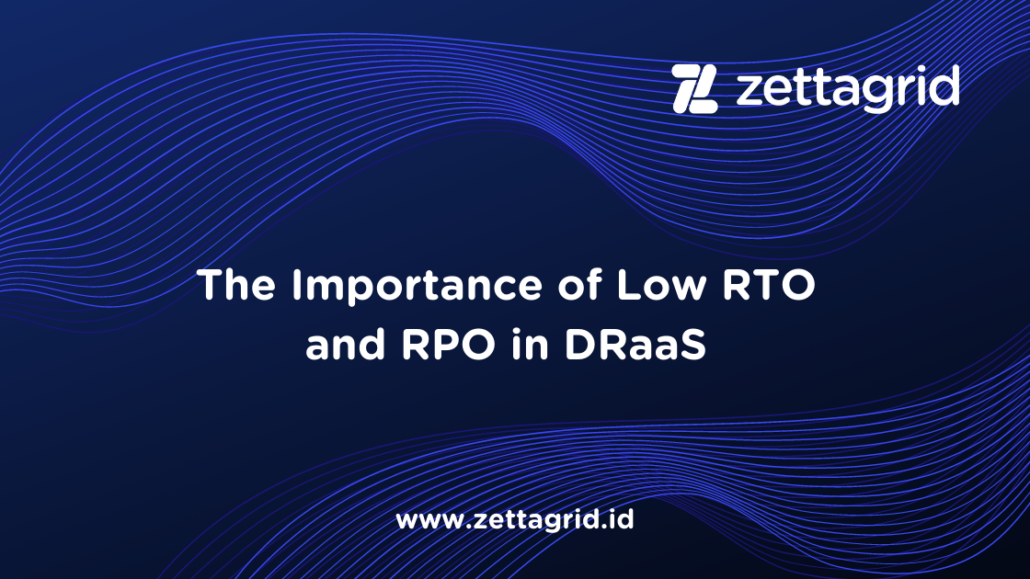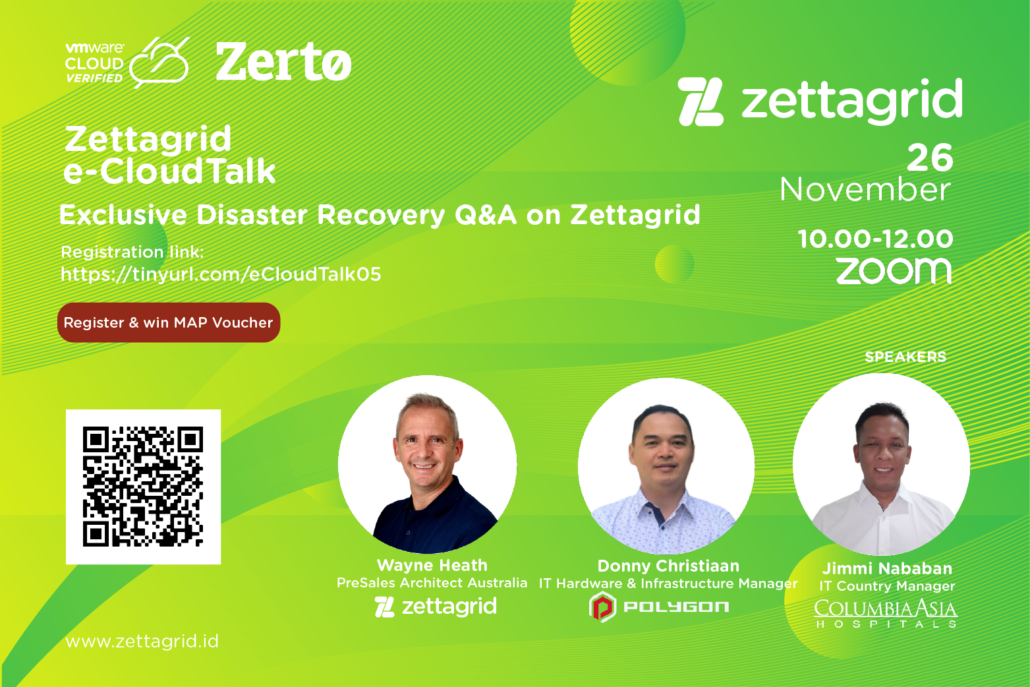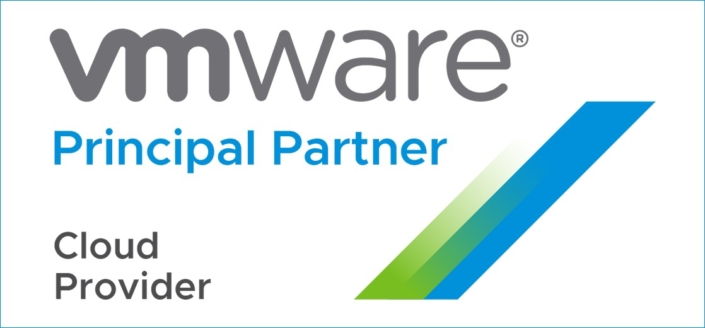Apa Itu RTO dan RPO dan Manfaatnya dalam Business Continuity dan Disaster Recovery

Dalam dunia teknologi informasi, terutama di bidang manajemen keamanan data dan pemulihan bencana (disaster recovery), terdapat dua konsep penting yang sering kali menjadi pusat perhatian: Recovery Time Objective (RTO) dan Recovery Point Objective (RPO). Kedua konsep ini memainkan peran kunci dalam memastikan kelangsungan bisnis dan integritas data di dunia digital yang penuh risiko. Artikel ini akan membahas secara mendalam RTO dan RPO, dari yang umum hingga yang spesifik, serta mengapa kedua konsep ini sangat penting dalam lingkungan bisnis saat ini.
Dalam era digital saat ini, data menjadi salah satu aset paling berharga bagi perusahaan. Data tidak hanya berisi informasi pelanggan dan transaksi, tetapi juga termasuk kode sumber aplikasi, konfigurasi jaringan, dan berbagai jenis informasi yang penting untuk operasi sehari-hari perusahaan. Oleh karena itu, keamanan data dan kemampuan pemulihan data (data recovery) yang efektif sangatlah penting.
RTO dan RPO adalah dua konsep kunci dalam merancang strategi disaster recovery dan manajemen risiko data. Masing-masing konsep memiliki peran dan arti yang berbeda dalam konteks perlindungan data dan pemulihan setelah bencana atau kejadian tak terduga lainnya. Mari kita mulai dengan pemahaman yang lebih umum tentang keduanya.
RTO (Recovery Time Objective) – Batasan Waktu Pemulihan
RTO, atau Recovery Time Objective, adalah waktu maksimal yang diberikan kepada sebuah sistem atau aplikasi untuk pulih setelah terjadi bencana atau gangguan. Dalam kata lain, RTO mengukur berapa lama perusahaan dapat mengizinkan sistem atau aplikasi tidak beroperasi sebelum terjadi dampak yang tidak dapat diterima. RTO umumnya diukur dalam satuan waktu seperti jam, menit, atau bahkan detik, tergantung pada kebutuhan bisnis.
Misalnya, jika sebuah perusahaan memiliki RTO 4 jam untuk sistem manajemen inventaris mereka, ini berarti bahwa sistem tersebut harus kembali beroperasi dalam waktu empat jam setelah terjadi gangguan atau bencana. Jika pemulihan sistem memakan waktu lebih dari empat jam, maka perusahaan tersebut dapat mengalami dampak negatif yang signifikan, seperti kehilangan penjualan atau ketidakpuasan pelanggan.
Pentingnya RTO adalah memastikan bahwa perusahaan memiliki disaster recovery plan yang efektif dan dapat diandalkan. RTO membantu perusahaan menetapkan prioritas dalam data recovery dan sistem, serta menentukan sumber daya yang diperlukan untuk mencapai target waktu pemulihan tersebut.
RPO (Recovery Point Objective) – Batasan Titik Pemulihan
Selanjutnya, kita akan membahas Recovery Point Objective atau RPO. RPO adalah konsep yang berfokus pada sejauh mana perusahaan dapat menerima kehilangan data dalam kejadian bencana atau gangguan. RPO diukur dalam periode waktu yang sama seperti RTO, yaitu jam, menit, atau detik, tergantung pada kebutuhan bisnis.
Misalnya, jika sebuah perusahaan memiliki RPO 1 jam untuk sistem basis data pelanggan mereka, ini berarti bahwa perusahaan dapat menerima kehilangan data hingga satu jam sebelum bencana atau gangguan terjadi. Dalam konteks ini, “kehilangan data” bisa berarti bahwa semua perubahan atau transaksi yang terjadi dalam satu jam terakhir sebelum gangguan mungkin tidak dapat dipulihkan.
RPO sangat penting karena mengukur sejauh mana perusahaan dapat membatasi kerugian data dalam skenario yang tidak diinginkan. RPO yang lebih rendah mengharuskan perusahaan untuk melakukan cadangan data lebih sering, yang dapat menjadi tugas yang lebih sulit dan mahal. Namun, ini juga berarti bahwa perusahaan dapat memulihkan data yang lebih baru dan memiliki tingkat kehilangan data yang lebih rendah.
Mengapa RTO dan RPO Penting?
Sekarang, kita telah memahami apa itu RTO dan RPO secara umum. Namun, mengapa kedua konsep ini sangat penting dalam dunia bisnis dan teknologi informasi?
Kelangsungan Bisnis
Salah satu alasan utama adalah kelangsungan bisnis. Setiap perusahaan ingin memastikan bahwa operasinya dapat terus berjalan meskipun mengalami gangguan atau bencana. RTO memastikan bahwa waktu pemulihan sistem atau aplikasi tidak melebihi batasan yang dapat diterima oleh bisnis, sehingga bisnis dapat kembali beroperasi sesegera mungkin.
Sementara itu, RPO memastikan bahwa data yang hilang selama bencana atau gangguan dapat dipulihkan dalam batasan yang dapat diterima. Ini penting terutama untuk bisnis yang bergantung pada data pelanggan, informasi keuangan, atau data penting lainnya. Dengan memiliki RPO yang baik, perusahaan dapat meminimalkan kerugian data dan menghindari dampak yang merugikan.
Kepuasan Pelanggan
Kepuasan pelanggan adalah faktor lain yang sangat dipengaruhi oleh RTO dan RPO. Jika sebuah perusahaan tidak dapat memulihkan layanan atau data dengan cepat setelah terjadi gangguan, pelanggan mungkin akan kecewa dan beralih ke pesaing. RTO yang lambat dapat menyebabkan penurunan kepuasan pelanggan dan potensi kehilangan bisnis.
Kepatuhan Regulasi
Banyak industri dan negara memiliki regulasi yang mengharuskan perusahaan untuk melindungi data pelanggan dan bisnis. Misalnya, General Data Protection Regulation (GDPR) di Uni Eropa mengharuskan perusahaan untuk melindungi data pelanggan dan memberikan kemampuan data recovery yang baik. RTO dan RPO yang baik dapat membantu perusahaan mematuhi regulasi tersebut dan menghindari denda dan sanksi yang mungkin diberikan.
RTO dan RPO dalam Praktik
Setiap perusahaan memiliki kebutuhan yang berbeda-beda ketika mengatur RTO dan RPO mereka. Beberapa faktor yang mempengaruhi penentuan RTO dan RPO meliputi:
Jenis Data
Jenis data yang diolah oleh perusahaan dapat memengaruhi RTO dan RPO. Data yang sangat penting, seperti data pelanggan atau data keuangan, mungkin memiliki RTO dan RPO yang lebih ketat daripada data yang kurang penting.
Sumber Daya
Ketersediaan sumber daya juga merupakan faktor yang memengaruhi RTO dan RPO. Perusahaan dengan anggaran yang lebih besar mungkin dapat mengatur RTO dan RPO yang lebih ketat karena mereka memiliki akses ke teknologi disaster recovery yang lebih canggih.
Risiko Industri
Industri tempat perusahaan beroperasi juga dapat memengaruhi penentuan RTO dan RPO. Industri yang lebih rentan terhadap bencana atau serangan mungkin memerlukan RTO dan RPO yang lebih ketat.
Kebijakan Internal
Kebijakan internal perusahaan juga berperan dalam penentuan RTO dan RPO. Perusahaan harus mempertimbangkan berapa banyak risiko yang bersedia mereka ambil dan berapa banyak sumber daya yang mereka siapkan untuk disaster recovery.
Implementasi RTO dan RPO
Setelah perusahaan menentukan RTO dan RPO mereka, langkah berikutnya adalah mengimplementasikan strategi pemulihan yang sesuai. Beberapa langkah yang dapat diambil untuk mencapai RTO dan RPO yang ditetapkan adalah:
Cadangan Data Reguler
Mengamankan data secara teratur adalah langkah penting untuk mencapai RPO yang rendah. Perusahaan harus membuat cadangan data dengan frekuensi yang memadai sesuai dengan RPO mereka. Ini dapat dilakukan dengan bantuan perangkat lunak cadangan data dan sistem penyimpanan yang andal.
Redundansi Infrastruktur
Menggunakan infrastruktur yang redundan dapat membantu mencapai RTO yang lebih cepat. Ini berarti bahwa perusahaan memiliki salinan sistem dan aplikasi yang siap digunakan jika sistem utama mengalami gangguan.
Pengujian Pemulihan
Menguji disaster recovery plan secara teratur adalah langkah penting untuk memastikan bahwa RTO dan RPO yang ditetapkan dapat dicapai. Pengujian pemulihan memberikan kesempatan untuk mengidentifikasi potensi masalah dan perbaikannya sebelum terjadi kejadian yang sebenarnya.
Pemantauan Berkelanjutan
Mengawasi sistem dan aplikasi secara terus-menerus dapat membantu mendeteksi gangguan atau bencana lebih cepat, yang pada gilirannya dapat membantu mencapai RTO yang lebih singkat.
Studi Kasus: Peran RTO dan RPO dalam Bisnis E-Commerce
Untuk memberikan contoh konkret tentang bagaimana RTO dan RPO berperan dalam dunia bisnis, mari kita lihat studi kasus dalam konteks bisnis e-commerce.
RTO dalam Bisnis E-Commerce
Dalam bisnis e-commerce, RTO dapat menjadi perbedaan antara mempertahankan pelanggan atau kehilangan mereka. Misalnya, pertimbangkan toko online yang menjual produk-produk fashion. Jika sistem toko online tersebut mengalami gangguan dan pelanggan tidak dapat melakukan pembelian selama berjam-jam, pelanggan mungkin akan beralih ke pesaing yang lebih dapat diandalkan. Oleh karena itu, RTO yang cepat sangat penting dalam hal ini.
RPO dalam Bisnis E-Commerce
Sementara itu, RPO dalam bisnis e-commerce mengacu pada sejauh mana data pesanan dan inventaris dapat dipulihkan setelah terjadi gangguan. Jika toko online kehilangan data pesanan selama satu jam sebelum terjadi gangguan, ini dapat mengakibatkan kebingungan yang besar dan hilangnya pendapatan. Oleh karena itu, RPO yang ketat, mungkin hanya beberapa menit, sangat penting untuk memastikan integritas data pesanan dan inventaris.
Dengan menetapkan RTO dan RPO yang sesuai, bisnis e-commerce dapat memastikan bahwa mereka dapat menjaga kelangsungan bisnis, memuaskan pelanggan, dan melindungi data dengan baik.
Kesimpulan
RTO dan RPO adalah dua konsep yang sangat penting dalam dunia manajemen keamanan data dan disaster recovery. Kedua konsep ini membantu perusahaan mengatur batasan waktu pemulihan dan batasan titik pemulihan untuk sistem dan data mereka. Dengan memahami RTO dan RPO, perusahaan dapat merancang strategi pemulihan yang efektif, melindungi bisnis mereka, dan memuaskan pelanggan.
Penting untuk diingat bahwa setiap perusahaan memiliki kebutuhan yang berbeda-beda, dan oleh karena itu, RTO dan RPO harus disesuaikan dengan kebutuhan bisnis. Selain itu, implementasi dan pengujian rencana pemulihan juga penting untuk memastikan bahwa RTO dan RPO yang ditetapkan dapat dicapai dalam situasi nyata.
Dalam dunia yang terus berubah dan penuh risiko ini, pemahaman tentang RTO dan RPO adalah langkah penting menuju keberhasilan dan kelangsungan bisnis yang berkelanjutan. Semoga artikel ini telah membantu Anda memahami konsep ini dengan lebih baik dan bagaimana mereka dapat diterapkan dalam lingkungan bisnis Anda.
Zettagrid Indonesia menyediakan solusi lengkap untuk keberlanjutan bisnis dan disaster recovery yang mencakup pemulihan data, toleransi kesalahan, dan ketersediaan tinggi. Kami membuat pemulihan bencana menjadi lebih mudah dan terjangkau dengan menawarkan berbagai solusi disaster recovery yang sesuai dengan kebutuhan bisnis Anda. Hubungi kami di sales@zettagrid.id untuk informasi lebih lanjut.

 The Importance of Low RTO and RPO in Disaster Recovery as a Service (DRaaS)
The Importance of Low RTO and RPO in Disaster Recovery as a Service (DRaaS) Exclusive Disaster Recovery Q&A on Zettagrid
Exclusive Disaster Recovery Q&A on Zettagrid


